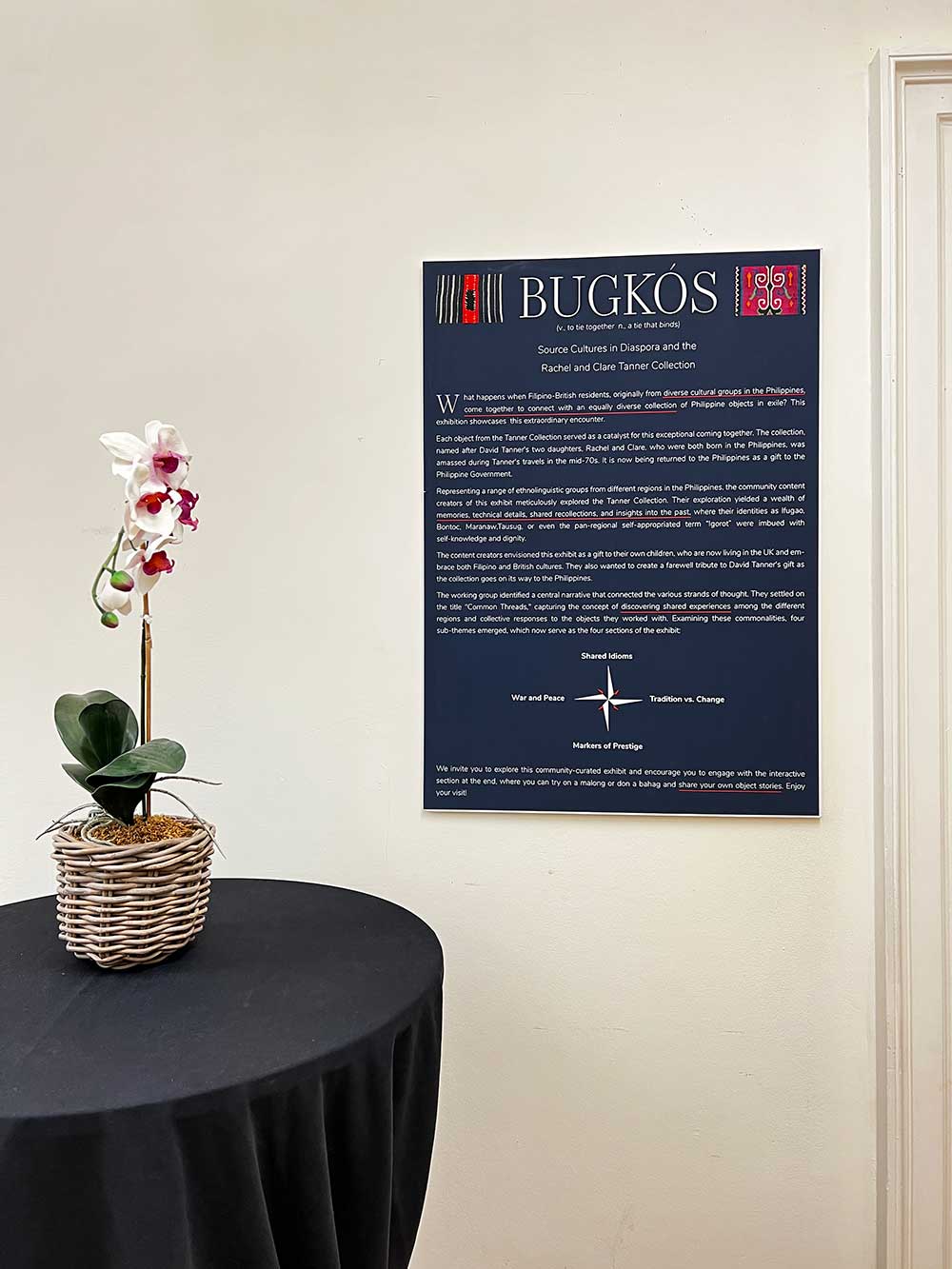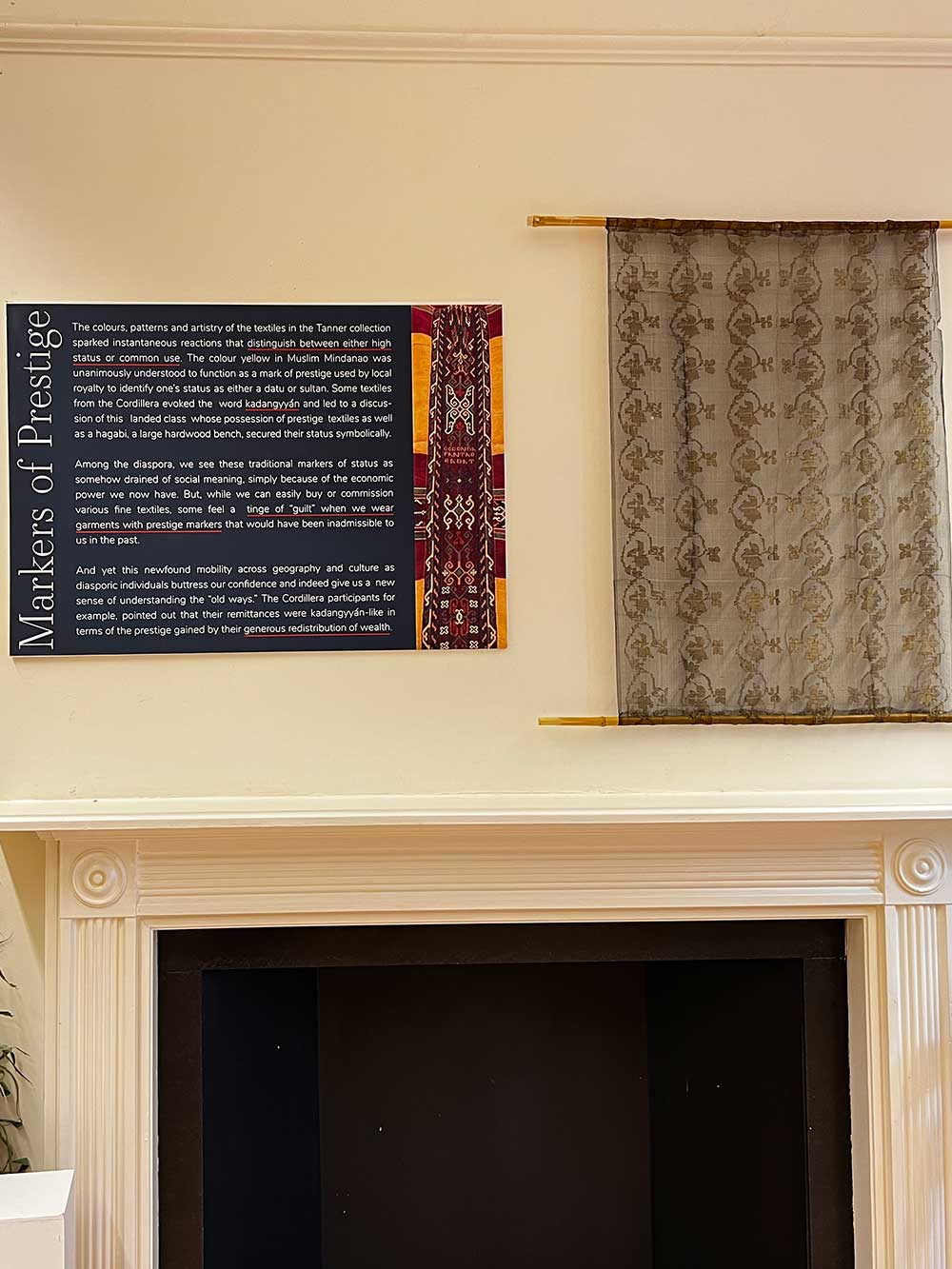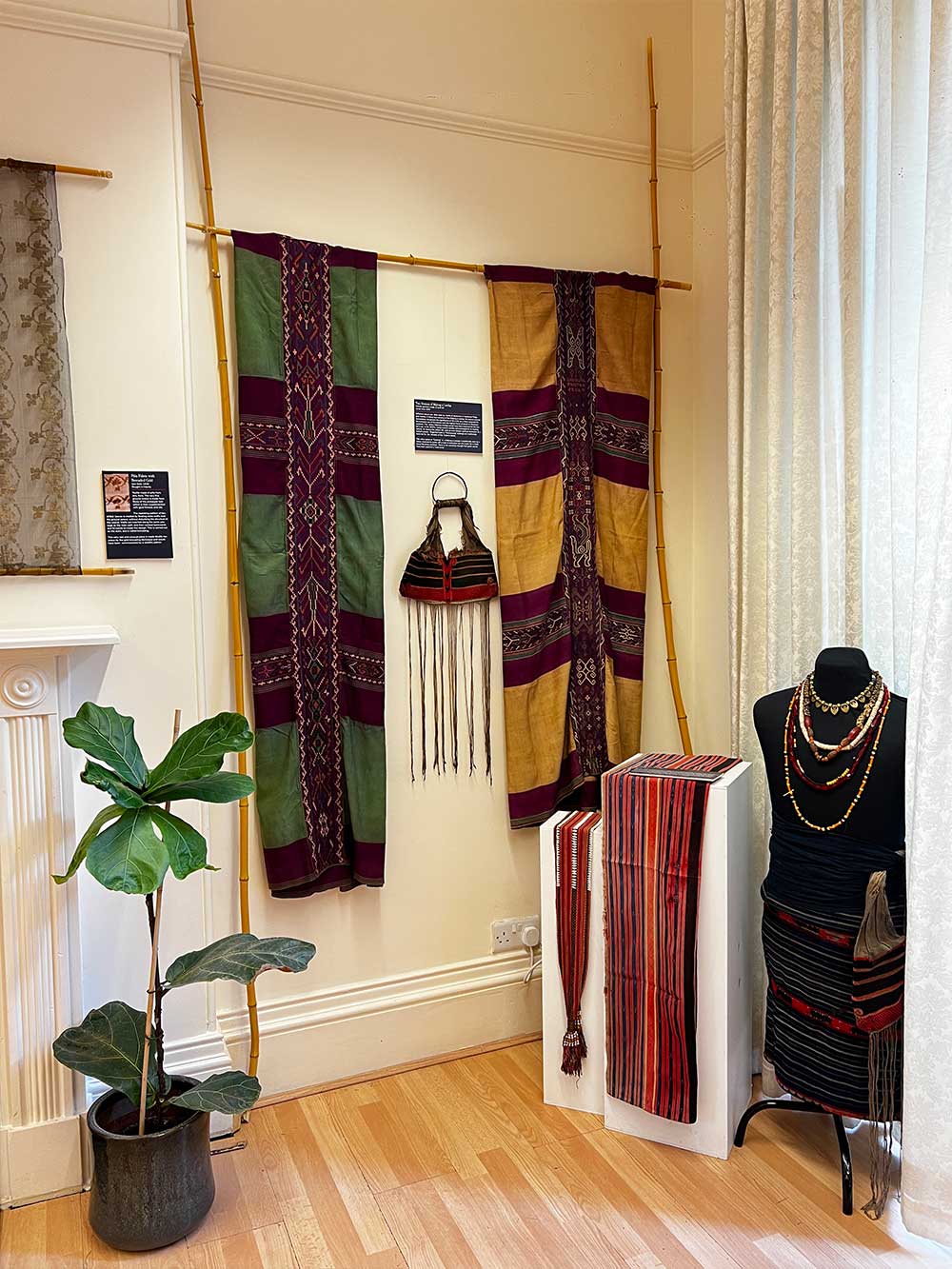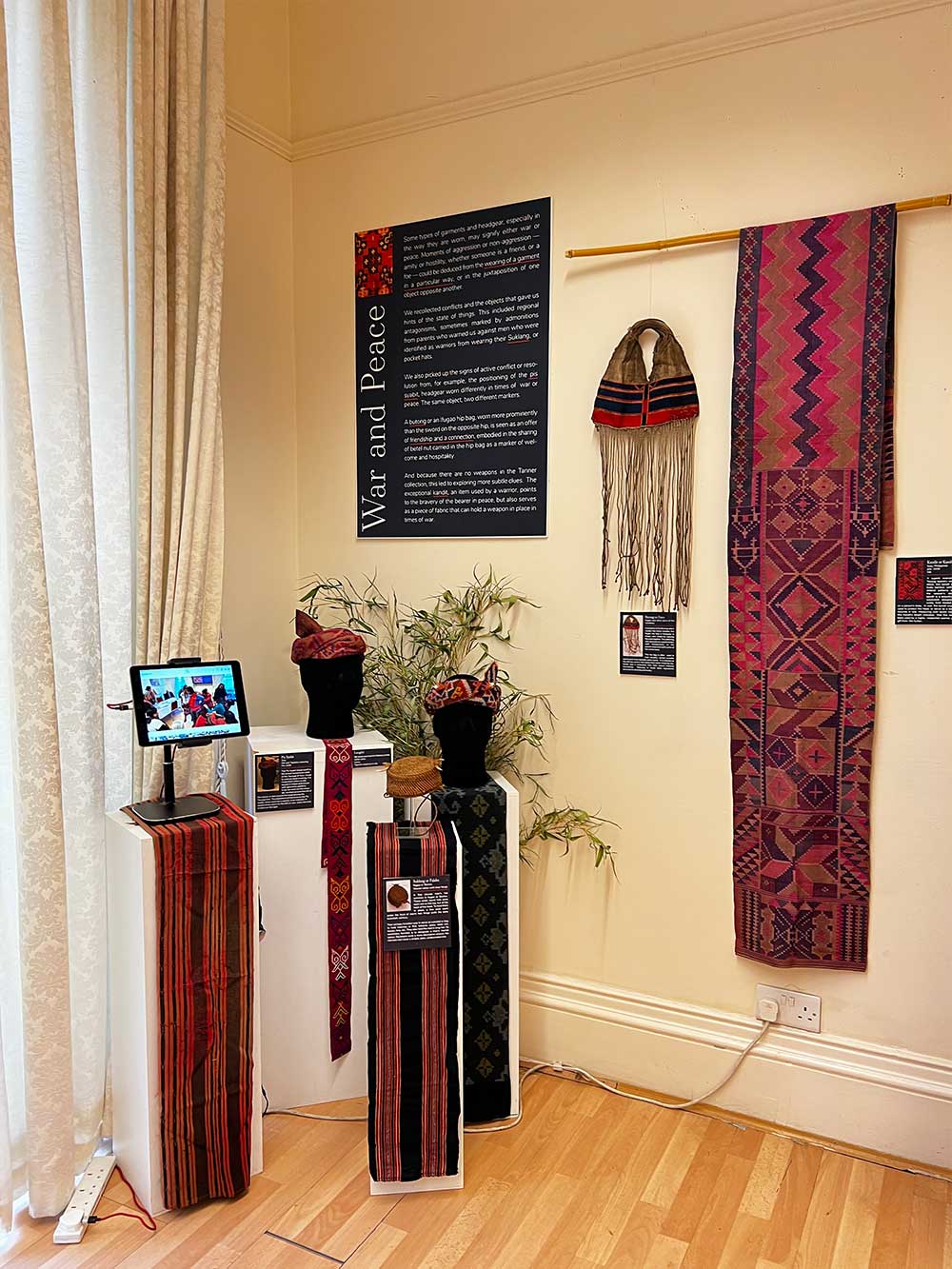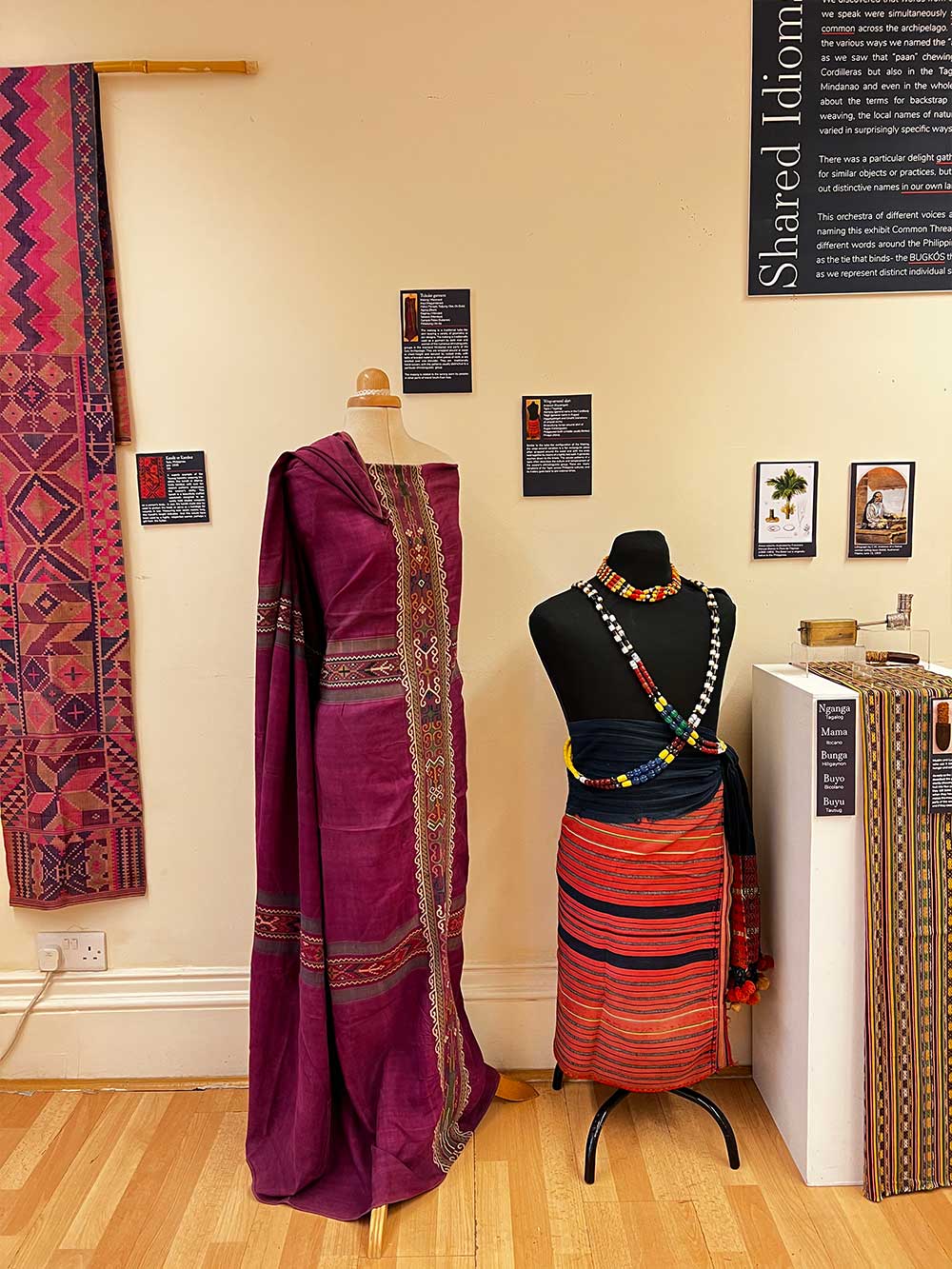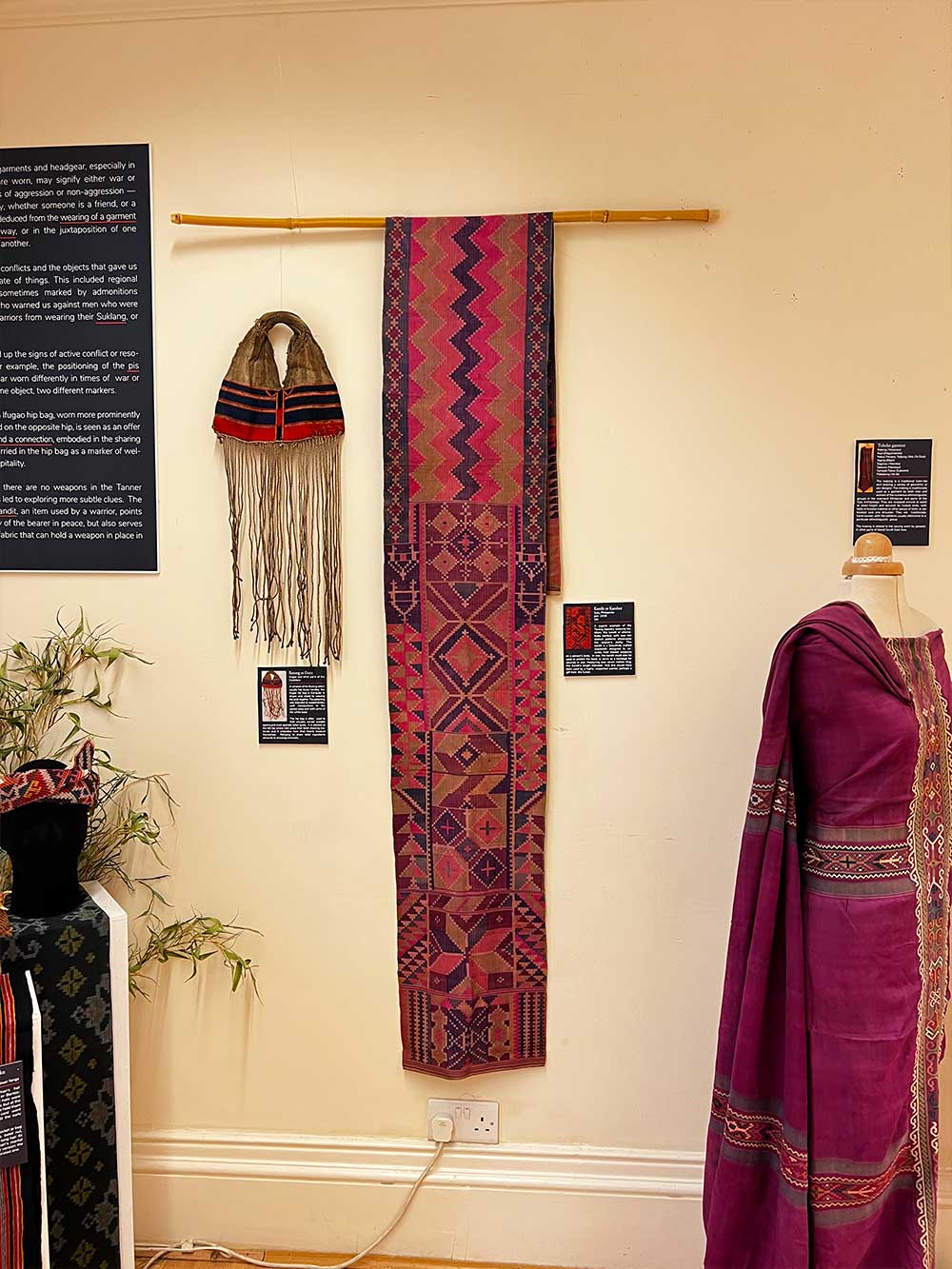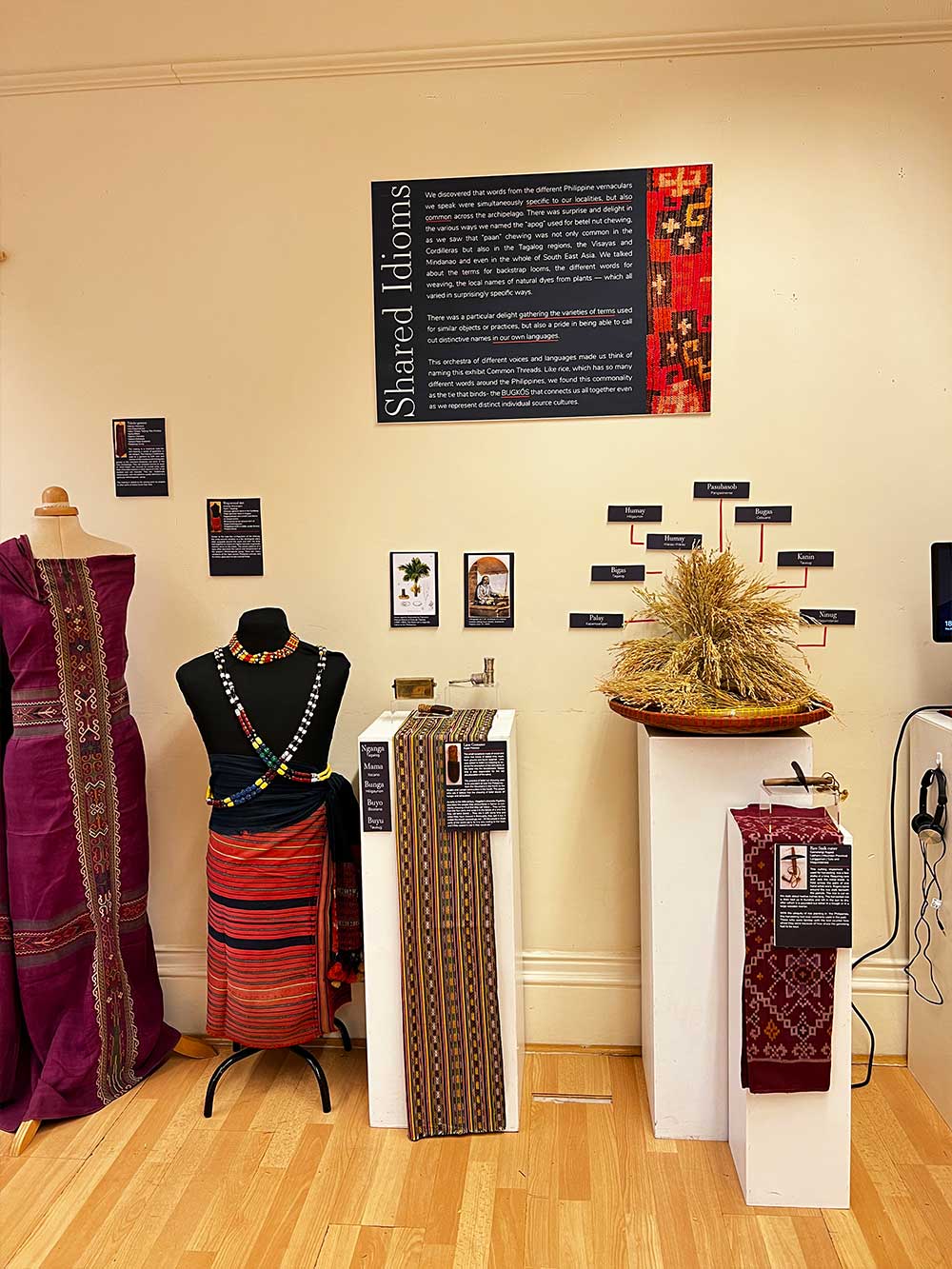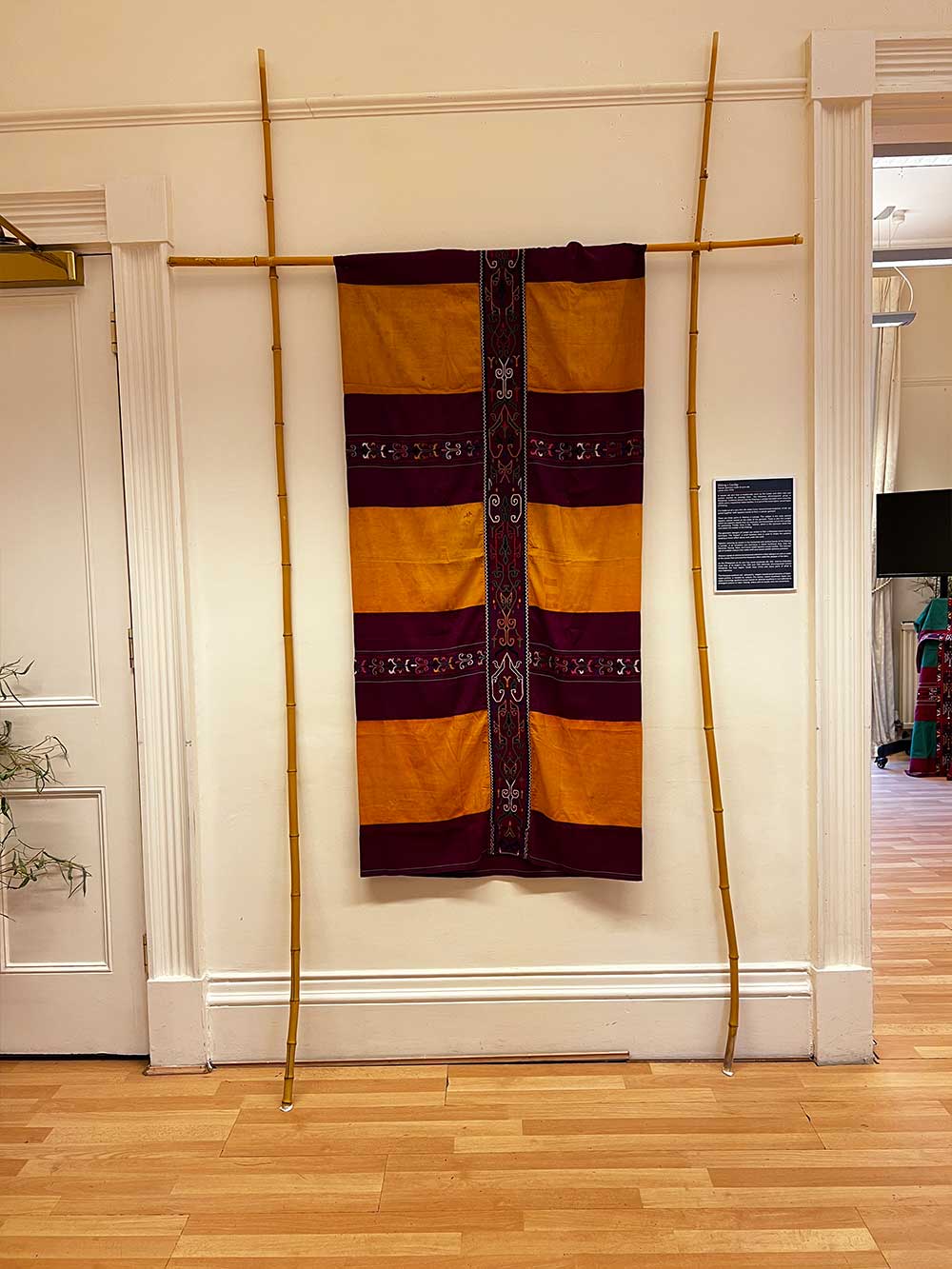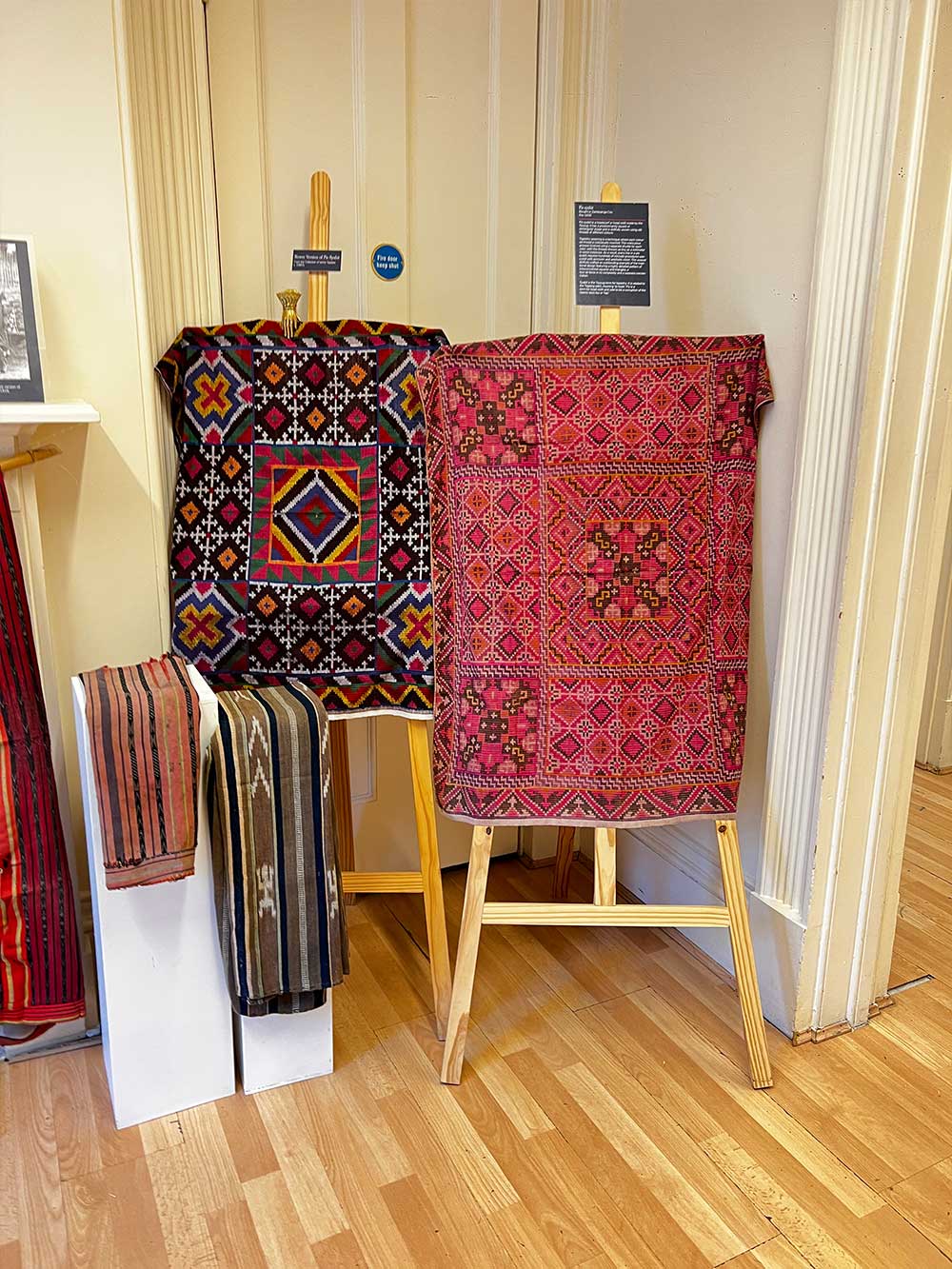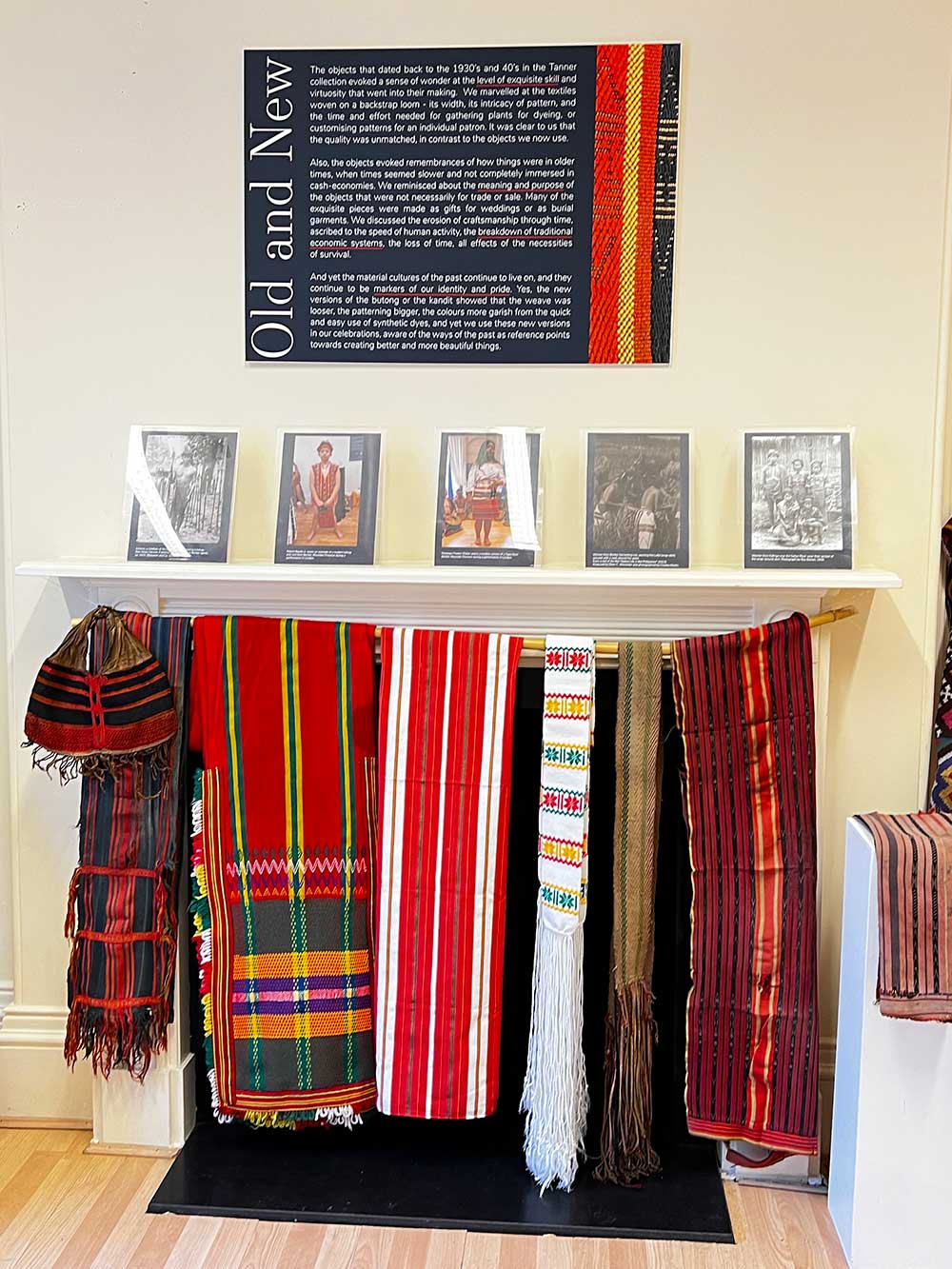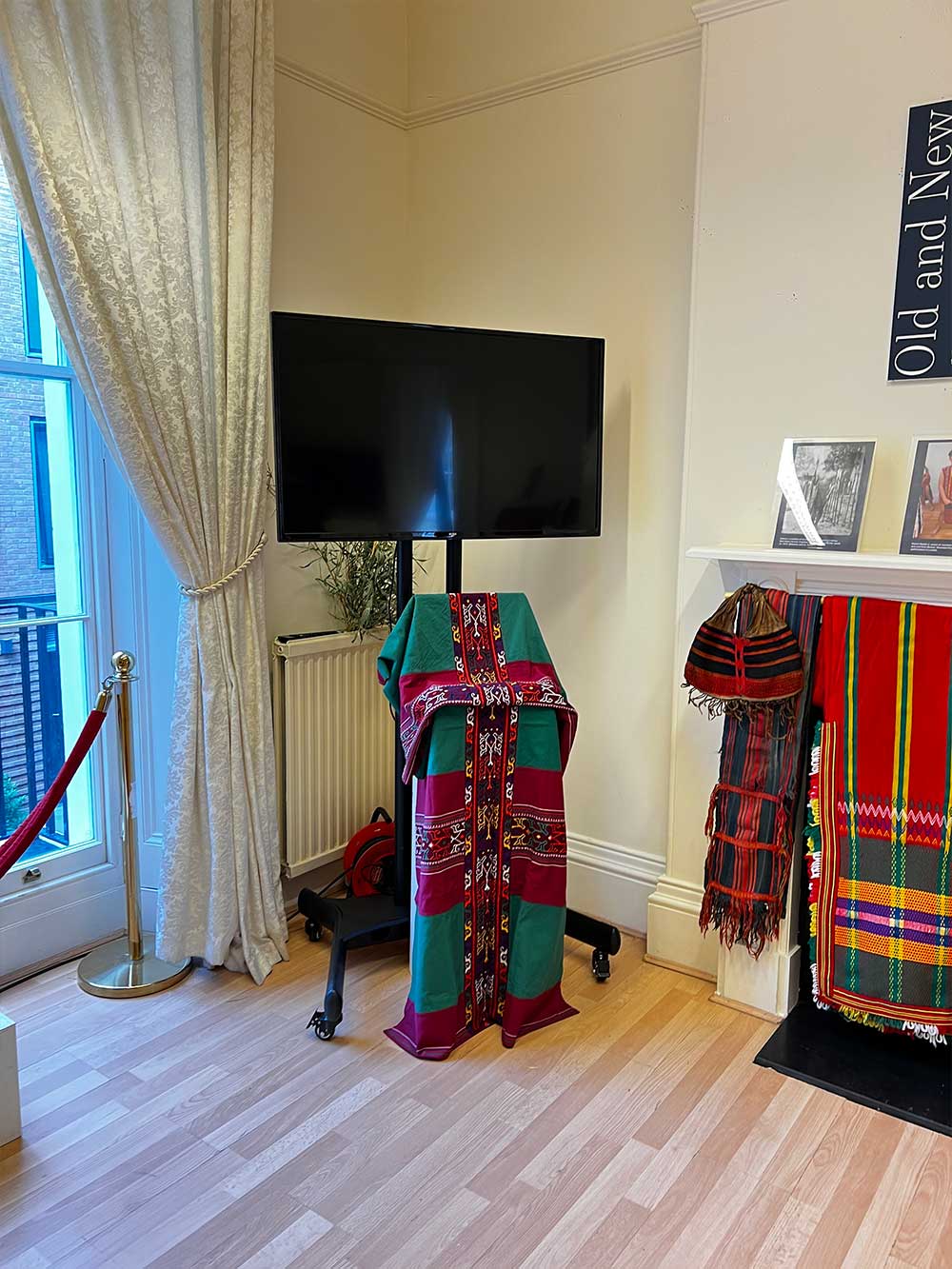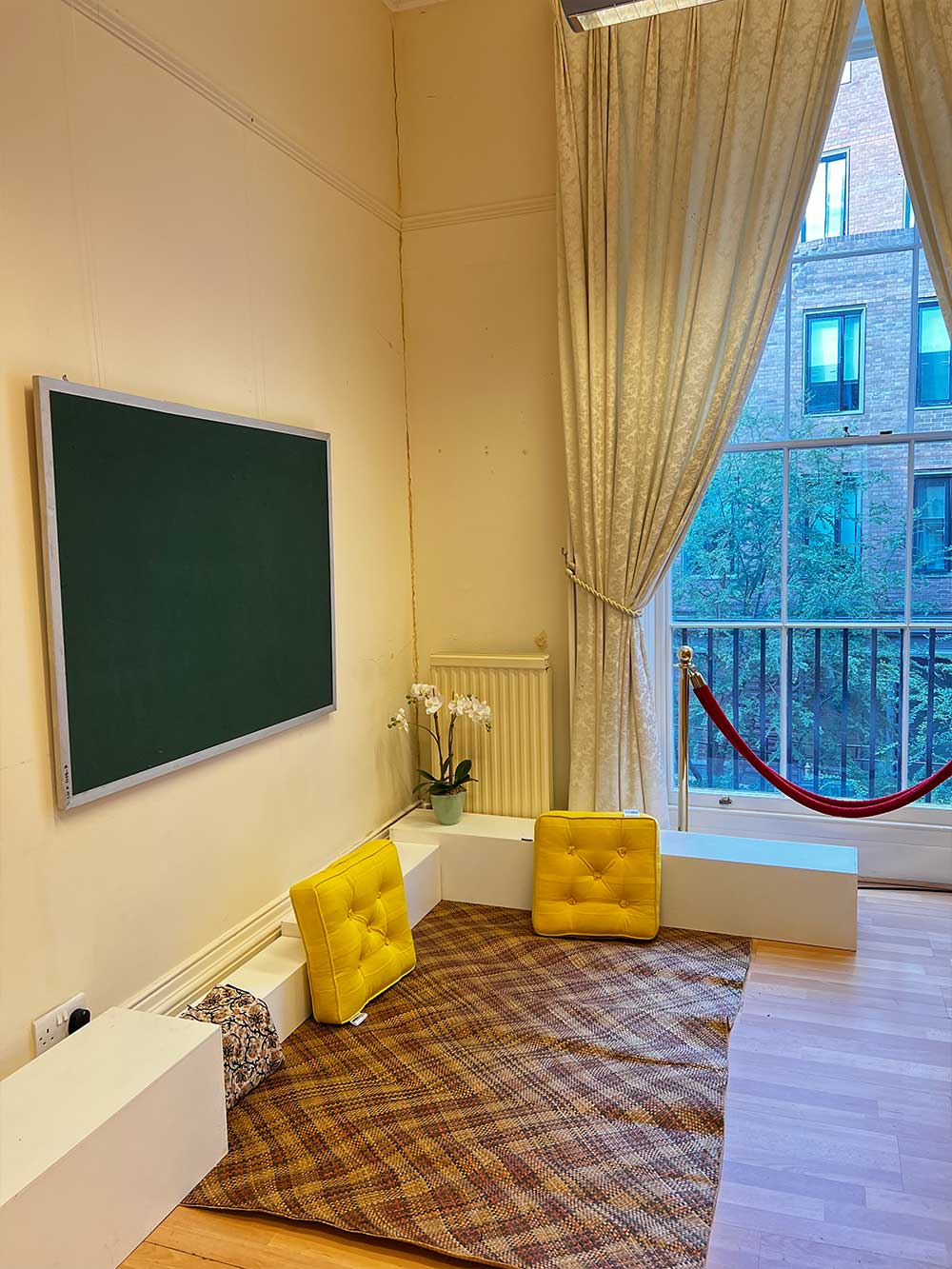BUGKÓS : Source Cultures in Diaspora and the Rachel and Clare Tanner Collection
The Workshop
It was the perfect opportunity to reconnect source communities in diaspora with their own material culture in exile. When Deputy Consul General Rhenita Rodriquez of the Philippine Embassy in London asked me to help mount an exhibit of the Rachel and Clare Tanner Collection before it was donated back to the Philippines -- I jumped at the idea. What better way to decolonize curatorial practice than having the source communities themselves assess the significance of these objects, make the objects come alive and then tell their stories in a display of their making? I tried to convince the Tanners and the Embassy that this was the only way to go. They not only said yes – they went full force. Mr Tanner would travel from Bath and answer any sticky questions. The Embassy would set up the space, cater lunch, and do the introductions. It was a marvel of short-notice nimble planning.
So on November 21, 2022, migrants from the provinces of the Philippine Cordillera and Muslim Mindanao gathered together in one room to do a source community curation workshop. For four hours, everyone handled (with gloves), paraded, laughed, contradicted, asked questions about provenance, gave the local names for this head scarf or that tapis or that motif.. and then for the final bit - formulated the BIG IDEA for the exhibit -- what common threads were we seeing in the stories told? what did they want these objects to say? who was the exhibit for? what languages are we going to use?
It was exhilarating.
Seeing the commonalities between weaving traditions in Ifugao and Maguindanao. Talk of cultural appropriation, cash crops and selling of heirlooms, religion and change, localisation and the use of material culture as markers of identity in diaspora. Repre-sentation in the 1904 St Louis Exposition and its lingering embarrassments. The need to own their stories. The delight of recognition, of technical mastery, of remembering little details like how to fasten an Ifugao butong. See Candy Gourlay's quick video of the event here:
The Exhibit
June 26, 2023-October 2023
Sentro Rizal 10 Suffolk St.,London
Based on the discussions with the working group, we proceeded to identify one big narrative and four sub-themes. The working title that came out of the workshop was "Common Threads" or generally, the idea of found commonalities and shared reactions to the various objects we worked on. We ended up using the term Bugkos (Cebuano) that connotes this idea along with all the iterations of the same thought in various other Philippine languages.
We also articulated the four smaller stories from the general discussion and named each of the 4 sections in the exhibit as
a) Shared Idioms
b) Markers of Prestige
c) War and Peace
d) Old and New
Target Audience:
It was clear from the discussions that they mainly wanted the exhibit for 2nd generation Filipinos living in the UK. They wanted the show to express this need to connect with community heritage and show that they could come up with an exhibit that would evoke some sense of pride in the target audience. There was talk of the 1904 St Louis Exposition and how the Igorots and Moros were “displayed” then and they had hoped that this would somehow give them a better sense of ownership for their culture. They agreed that English would be used but with some focus on translating key words in several Philippine languages.
Exhibition Content and Source:
We catalogued the 27 items comprising the Rachel and Clare Tanner Collection and added it to the inventory of the Mapping Project. We included in the annotations some additional research about the objects as well as the general reactions of the source communities coming out of the workshop.
All items with photos and detail shots are found here. https://philippinestudies.uk/mapping/collections/show/441
Soon, we hope to add to the provenance of this collection as "Repatriated to the National Museum of the Philippines" - once the exhibit closes and the objects are sent back home.
Shared Idioms
We discovered that words from the different Philippine vernaculars we speak were simultaneously specific to our localities, but also common across the archipelago. There was surprise and delight in the various ways we named the “apog” used for betel nut chewing, simultaneously as we saw that “paan” chewing was not only common in the Cordilleras but also in the Tagalog regions, the Visayas and Mindanao and even in the whole of South East Asia. We talked about the terms for backstrap looms, the different words for weaving, the local names of natural dyes from plants — which all varied in surprisingly specific ways.
There was a particular delight gathering the varieties of terms used for similar objects or practices, but also a pride in being able to call out distinctive names in our own languages.
This orchestra of different voices and languages made us think of naming this exhibit Common Threads. Like rice, which has so many different words around the Philippines, we found this commonality as the tie that binds- the BUGKÓS that connects us all together even as we represent distinct individual source cultures.
Markers of Prestige
The colours, patterns and artistry of the textiles in the Tanner collection sparked instantaneous reactions that distinguish between either high status or common use. The colour yellow in Muslim Mindanao was unanimously understood to function as a mark of prestige used by local royalty to identify one’s status as either a datu or sultan. Some textiles from the Cordillera evoked the word kadangyyán and led to a discus- sion of this landed class whose possession of prestige textiles as well as a hagabi, a large hardwood bench, secured their status symbolically.
Among the diaspora, we see these traditional markers of status as somehow drained of social meaning, simply because of the economic power we now have. But, while we can easily buy or commission various fine textiles, some feel a tinge of “guilt” when we wear garments with prestige markers that would have been inadmissible to us in the past.
And yet this newfound mobility across geography and culture as diasporic individuals buttress our confidence and indeed give us a new sense of understanding the “old ways.” The Cordillera participants for example, pointed out that their remittances were kadangyyán-like in terms of the prestige gained by their generous redistribution of wealth.
War and Peace
Some types of garments and headgear, especially in the way they are worn, may signify either war or peace. Moments of aggression or non-aggression — amity or hostility, whether someone is a friend, or a foe — could be deduced from the wearing of a garment in a particular way, or in the juxtaposition of one object opposite another.
We recollected conflicts and the objects that gave us hints of the state of things. This included regional antagonisms, sometimes marked by admonitions from parents who warned us against men who were identified as warriors from wearing their Suklang, or pocket hats. We also picked up the signs of active conflict or reso- lution from, for example, the positioning of the pis syabit, headgear worn differently in times of war or peace. The same object, two different markers.
A butong or an Ifugao hip bag, worn more prominently than the sword on the opposite hip, is seen as an offer of friendship and a connection, embodied in the sharing of betel nut carried in the hip bag as a marker of wel- come and hospitality.
And because there are no weapons in the Tanner collection, this led to exploring more subtle clues. The exceptional kandit, an item used by a warrior, points to the bravery of the bearer in peace, but also serves as a piece of fabric that can hold a weapon in place in times of war.
Old and New
The objects that dated back to the 1930’s and 40’s in the Tanner collection evoked a sense of wonder at the level of exquisite skill and virtuosity that went into their making. We marvelled at the textiles woven on a backstrap loom - its width, its intricacy of pattern, and the time and effort needed for gathering plants for dyeing, or customising patterns for an individual patron. It was clear to us that the quality was unmatched, in contrast to the objects we now use.
Also, the objects evoked remembrances of how things were in older times, when times seemed slower and not completely immersed in cash-economies. We reminisced about the meaning and purpose of the objects that were not necessarily for trade or sale. Many of the exquisite pieces were made as gifts for weddings or as burial garments. We discussed the erosion of craftsmanship through time, ascribed to the speed of human activity, the breakdown of traditional economic systems, the loss of time, all effects of the necessities of survival.
And yet the material cultures of the past continue to live on, and they continue to be markers of our identity and pride. Yes, the new versions of the butong or the kandit showed that the weave was looser, the patterning bigger, the colours more garish from the quick and easy use of synthetic dyes, and yet we use these new versions in our celebrations, aware of the ways of the past as reference points towards creating better and more beautiful things.
